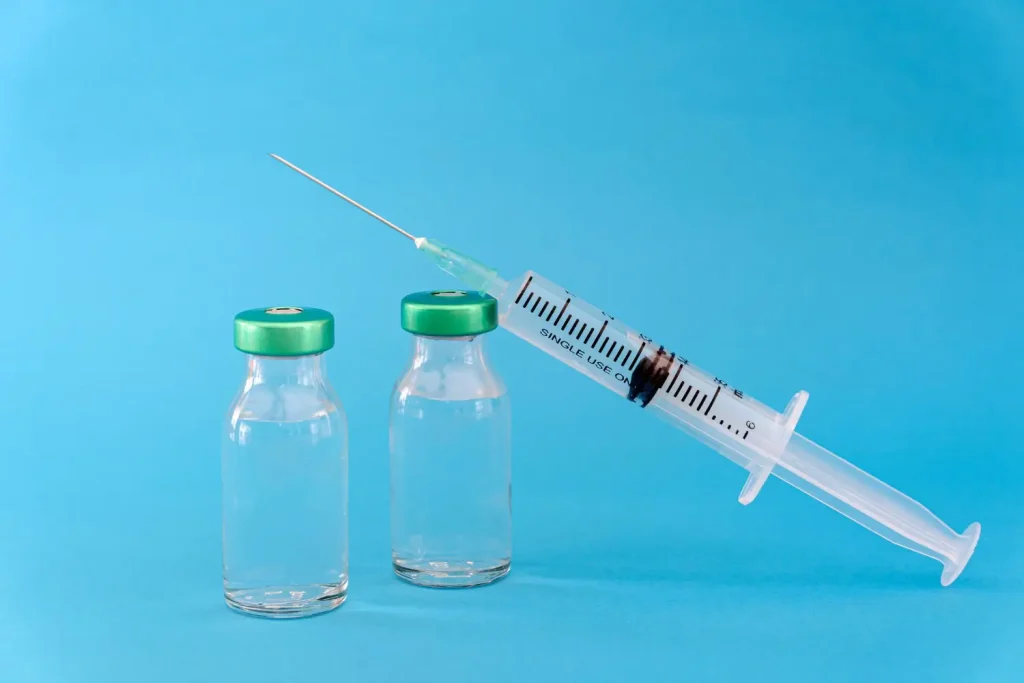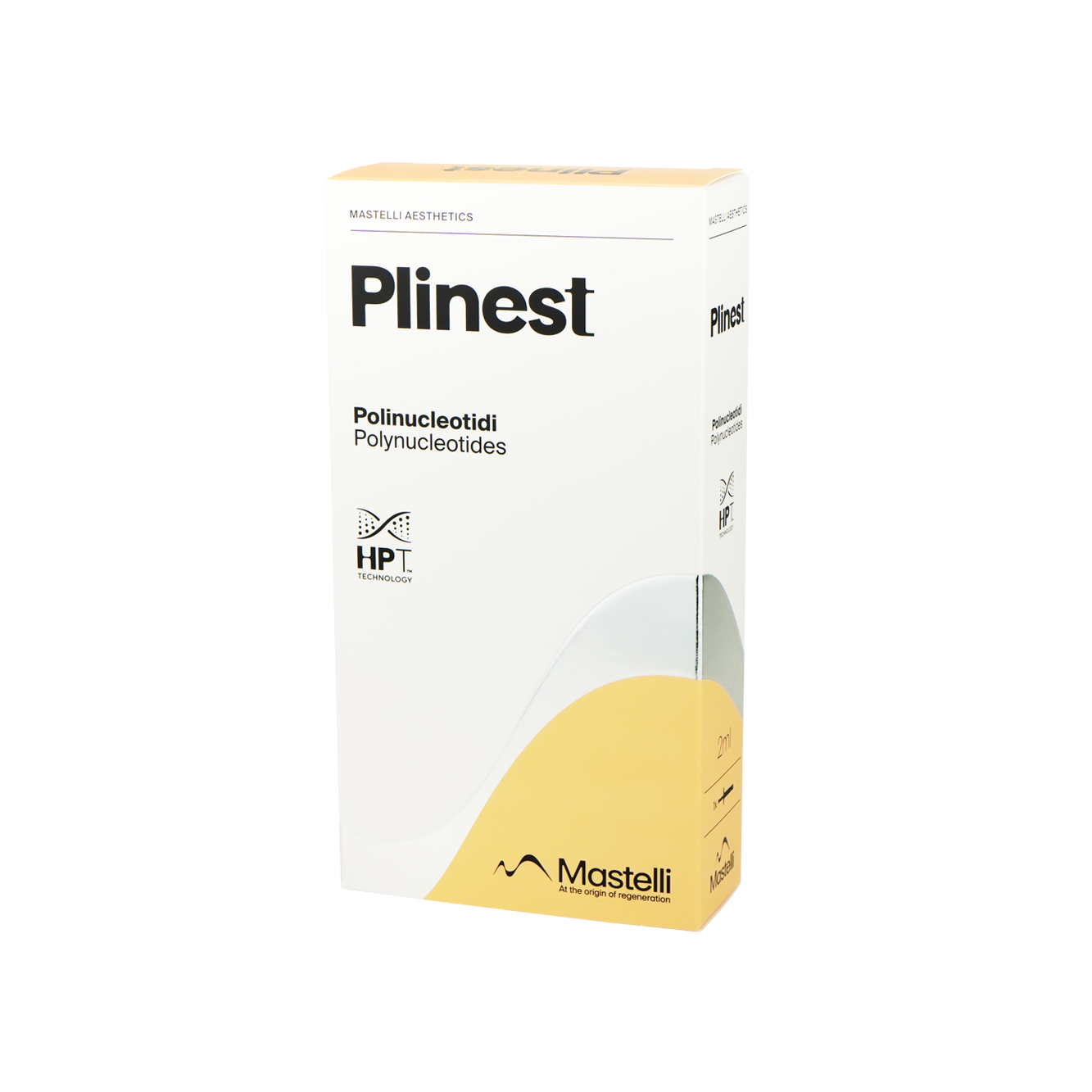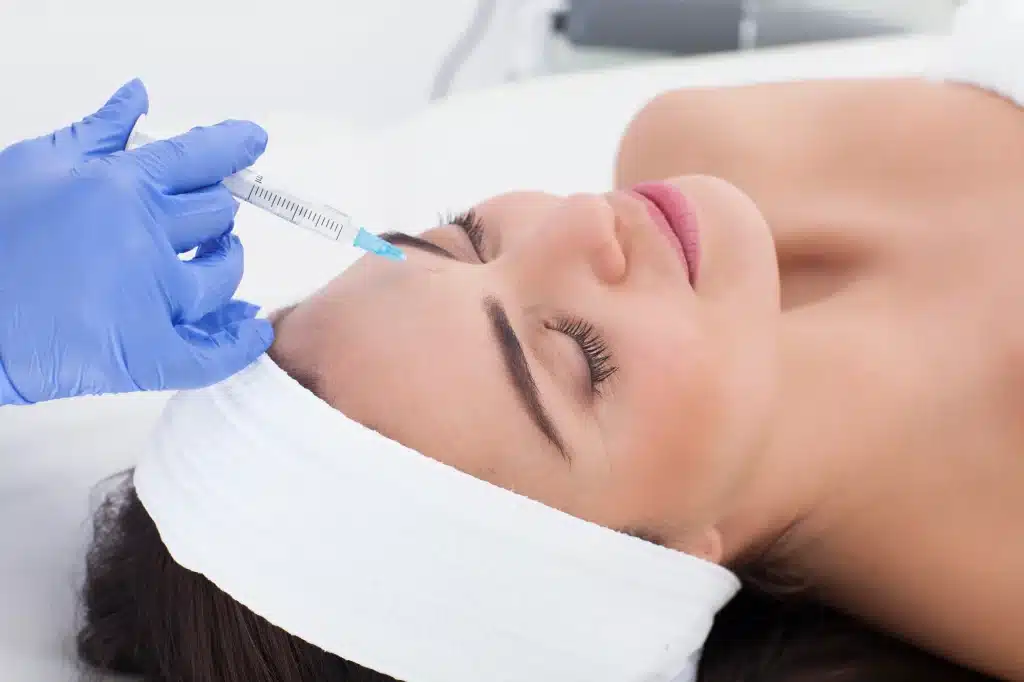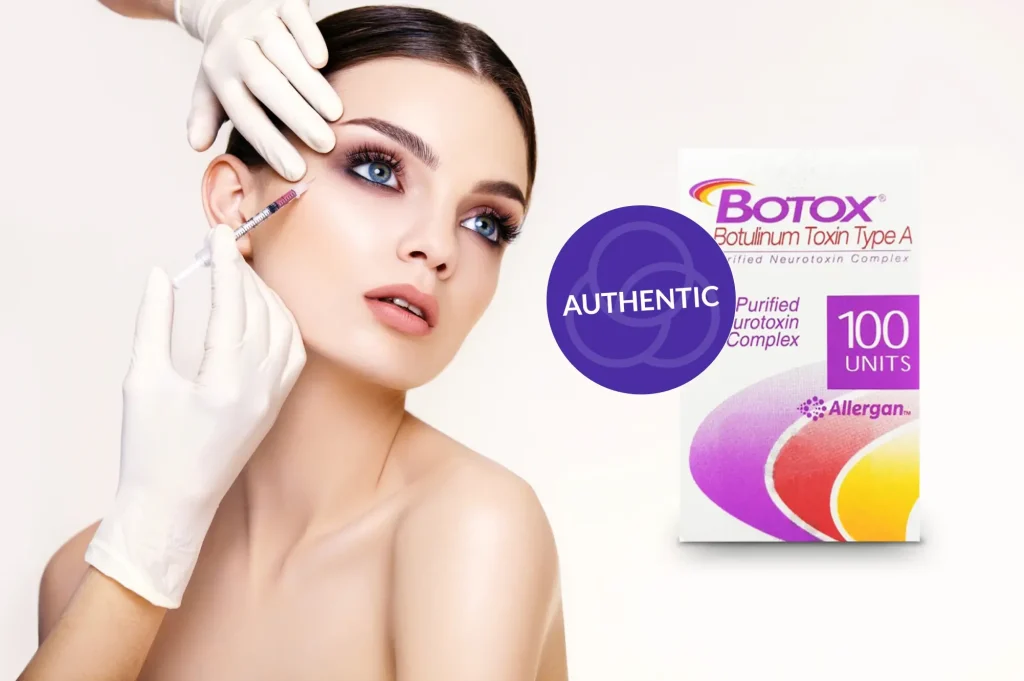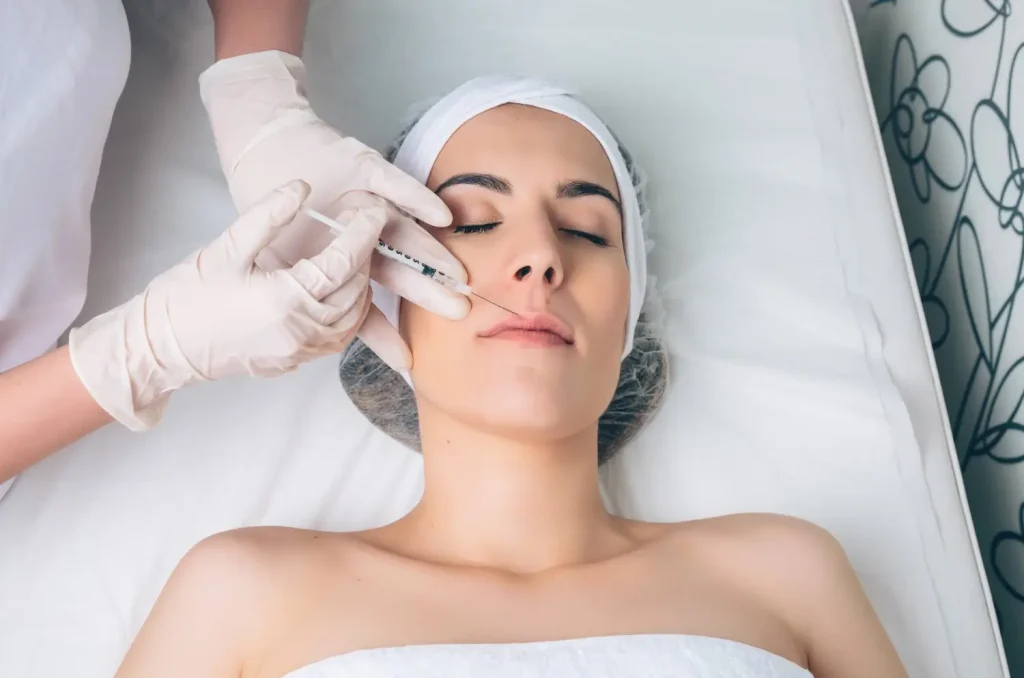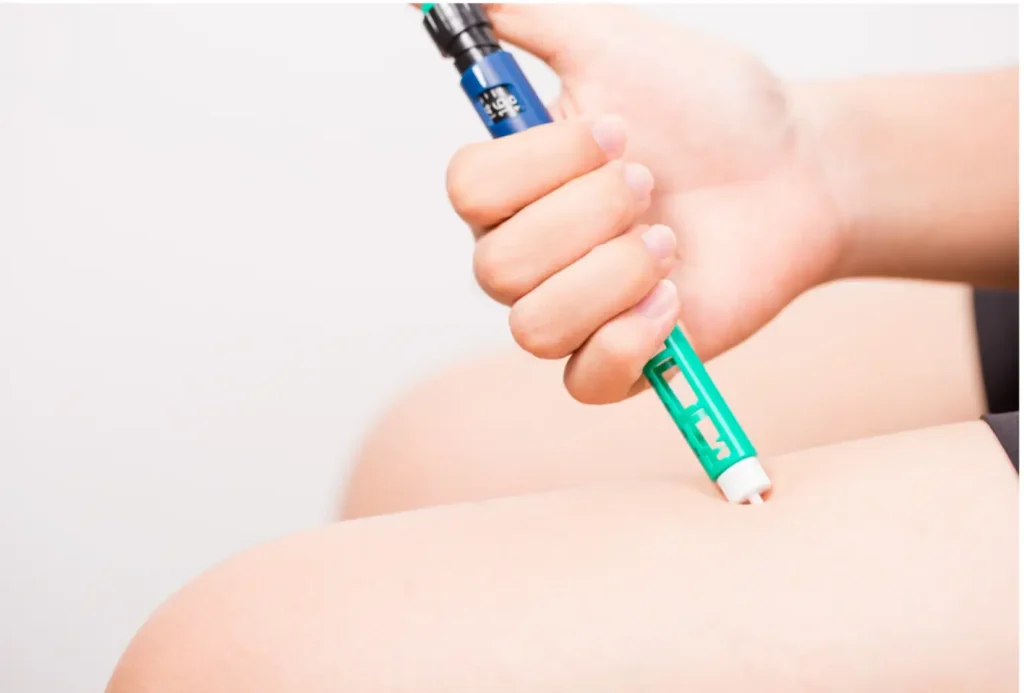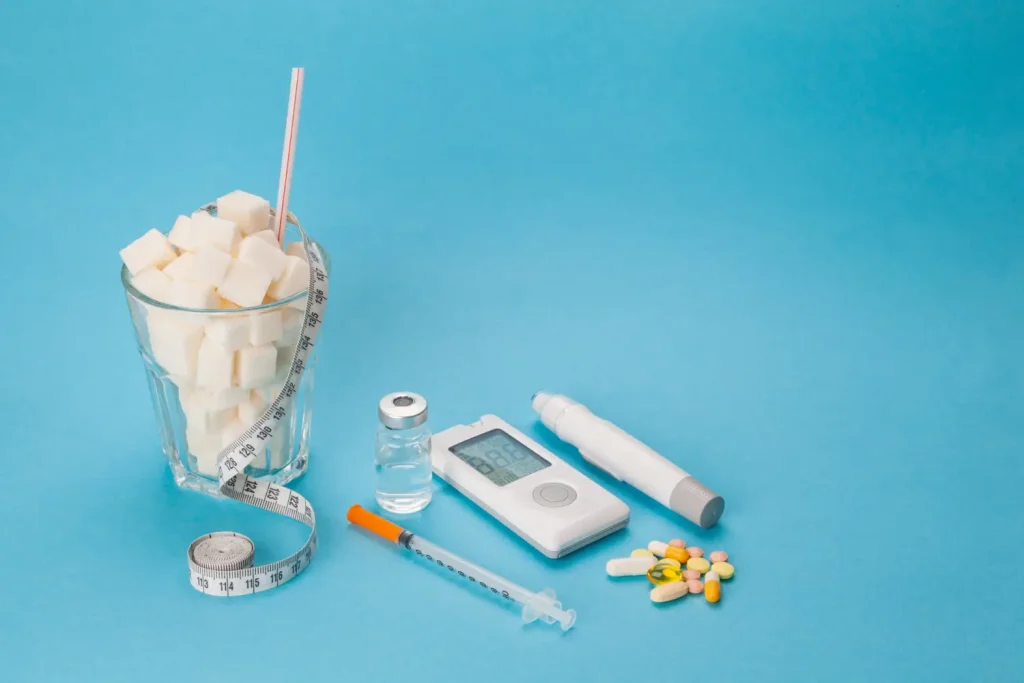Skin regeneration is a dynamic process influenced by intrinsic aging and environmental stressors. As collagen levels decline and skin loses elasticity, modern rejuvenation strategies—from topical treatments to injectable biostimulators—aim to restore skin health and reverse visible signs of aging.
Among these innovations, Plinest and Nucleofill stand out as leading polynucleotide-based injectables, both leveraging DNA fragments to stimulate skin repair. However, a key distinction lies in their origins: Plinest is derived from trout DNA, while Nucleofill uses salmon DNA. This molecular difference influences their clinical behavior, mechanism of action, and suitability for different skin concerns.
In this article, we will compare Plinest vs Nucleofill, examining their unique properties, benefits, and how they address various skin aging challenges. Whether your focus is on firmness, hydration, or overall skin resilience, understanding these differences can guide you in choosing the right regenerative solution.
Key Takeaways
- Plinest and Nucleofill serve as polynucleotide-based injectables that actively promote skin regeneration through different mechanisms and DNA sources. Plinest uses trout DNA via PN-HPT technology, while Nucleofill derives from salmon DNA.
- Plinest focuses on collagen stimulation, improving firmness, elasticity, and dermal structure, making it ideal for anti-aging treatments.
- Nucleofill emphasizes deep hydration, antioxidant protection, and cellular detoxification, supporting overall skin resilience and rejuvenation of tired, dull skin.
- Practitioners use both treatments for skin rejuvenation, fine lines, hydration repair, acne scarring, under-eye rejuvenation, and neck/décolletage firming.
- Plinest protocols typically involve 3 sessions spaced 2–3 weeks apart, with common Plinest side effects including mild redness, swelling, and bruising that resolve within days.
- Nucleofill treatments may require 3–4 sessions, sometimes using slightly deeper injection techniques depending on treatment goals, with a similarly mild side effect profile.
- Aftercare for both includes avoiding makeup, heat, exercise, and alcohol for 24 hours, while maintaining gentle skincare and proper hydration.
- Patients typically notice visible improvements in hydration, texture, and firmness within 2–4 weeks, with continued benefits over 1–2 months. Professionals often recommend maintenance sessions every 4–6 months.
- The choice between Plinest and Nucleofill depends on individual skin concerns—firmness vs hydration—with combination treatments offering synergistic benefits in certain cases.
- Consultation with a qualified aesthetic professional ensures the most effective and safe treatment plan, customized to a patient’s needs and skin conditions.
About: Medical Spa RX provides medical practices with premium products at the best prices. If you’re looking to buy Plinest for your practice, the sales representatives at Medical Spa RX can give you guidance.
Composition and Mechanism of Action
Plinest and Nucleofill are biorevitalizing injectables that utilize polynucleotides (PN)—fragments of DNA derived from natural sources—to promote skin regeneration. The key distinction lies in their origin and technological processing, which influences their biological effects and clinical outcomes.

- Plinest harnesses PN-HPT (Polynucleotides High Purification Technology) from trout DNA, focusing on fibroblast activation. This stimulates the production of collagen, elastin, and hyaluronic acid, resulting in enhanced skin elasticity, firmness, and overall dermal structure restoration.
- Nucleofill, in contrast, utilizes highly purified salmon DNA, emphasizing a multi-faceted mechanism: deep hydration, antioxidant defense, and cellular detoxification. It promotes tissue oxygenation and supports the regeneration of dermal matrices, making it highly effective for revitalizing dull or fatigued skin.
While both treatments improve hydration, elasticity, and skin tone, their clinical emphasis differs:
- Plinest is primarily regenerative and firming, ideal for anti-aging concerns.
- Nucleofill is hydrating, detoxifying, and biorestructuring, suitable for tired, sagging, or environmentally stressed skin.
Clinical Indications and Treatment Areas
Plinest and Nucleofill both target a wide range of aesthetic skin concerns using polynucleotide-based regenerative therapy. Their clinical indications overlap, but nuances in their mechanisms allow for tailored applications based on individual needs.
Clinical Indications and Treatment Areas
- Skin Rejuvenation: Improves texture, tone, elasticity, and dermal thickness for healthier, more radiant skin.
- Fine Lines and Wrinkles: Stimulates collagen to smooth fine lines and diminish early signs of aging.
- Hydration and Barrier Repair: Enhances moisture retention while fortifying the skin’s natural barrier function.
- Acne Scarring: Supports dermal remodeling to soften atrophic scars and encourage smoother skin texture.
- Under-Eye Rejuvenation: Addresses dark circles, puffiness, and fine lines by improving microcirculation and hydration.
- Neck and Décolletage: Firms lax skin and improves texture in delicate, aging-prone areas.
A thorough consultation with a qualified aesthetic professional ensures the most appropriate treatment selection, based on individual skin conditions, concerns, and desired outcomes.
Treatment Protocols and Patient Experience
Both treatments follow a series-based protocol to achieve optimal results:

- Plinest Protocol: Typically involves 3 sessions, spaced 2–3 weeks apart. Clinicians perform injections using a fine needle or cannula, placing them in the superficial dermal layers to stimulate regeneration and improve skin firmness. Patients generally experience minimal discomfort during the procedure.
- Nucleofill Protocol: May require 3–4 sessions, similarly spaced every 2–3 weeks. In some cases, practitioners inject slightly deeper to target specific tissue layers, particularly when aiming for intensive hydration and detoxification effects.
Common Plinest side effects include mild redness, swelling, or bruising at the injection site. These are generally transient and resolve within a few days without intervention. Nucleofill side effects are similar, reflecting the body’s normal response to intradermal injections.
Both treatments are generally well-tolerated, with minimal downtime. Patients often observe improvements in hydration, skin texture, and firmness within 2–4 weeks, with continued enhancement over the next 1–2 months.
Aftercare Tips for Both Treatments
To optimize results and minimize side effects, patients should follow the recommended aftercare measures:
- Avoid makeup, intense heat exposure, and strenuous exercise for at least 24 hours post-treatment.
- Use gentle, fragrance-free skincare products to support skin recovery.
- Refrain from consuming alcohol or anti-inflammatory medications that could increase the risk of bruising.
- Stay well-hydrated and protect treated areas from direct sun exposure.
Depending on individual needs, maintenance treatments every 4–6 months may be advised to sustain skin improvements and enhance cumulative benefits.
Conclusion
Both Plinest and Nucleofill offer scientifically backed solutions for skin rejuvenation, utilizing polynucleotides to stimulate tissue repair and enhance skin health. While Plinest emphasizes collagen stimulation for firmness and elasticity, Nucleofill excels in providing deep hydration, detoxification, and structural biorestoration.
Choosing between these treatments depends on specific skin concerns, desired outcomes, and individual patient profiles. In some cases, a combination approach may yield the best results, addressing both regenerative and hydration needs simultaneously.
A consultation with a qualified aesthetic provider ensures a customized treatment plan, maximizing the benefits of these advanced biostimulatory injectables while managing potential side effects. With minimal downtime and natural-looking outcomes, both Plinest and Nucleofill remain leading choices in the field of modern regenerative aesthetics.
FAQs
1. What is Plinest made of?
Plinest contains highly purified polynucleotides derived from trout DNA, developed with PN-HPT technology to ensure safety and efficacy.
2. Is Plinest safe for all skin types?
Yes, Plinest is suitable for all skin types and tones. However, patients must undergo a professional assessment to determine treatment suitability.
3. How long do results from Plinest last?
Results can last 4–6 months or longer, depending on age, skin condition, and lifestyle. Clinicians typically recommend ongoing maintenance treatments to preserve and boost results over time.
4. What’s the difference between Plinest and traditional dermal fillers?
Plinest doesn’t add volume like dermal fillers. It works on a cellular level to improve skin quality and firmness.
5. Can Plinest be combined with other treatments?
Yes. Practitioners often combine Plinest with microneedling, laser treatments, or dermal fillers for enhanced skin rejuvenation.
6. Is there any downtime with Plinest treatments?
Downtime is minimal. Most patients return to normal activities within 24–48 hours with proper aftercare.
7. How soon will I see results from Plinest?
You may notice improved hydration and texture within 2–3 weeks, with gradual improvements continuing over 6–8 weeks.
References
Griffiths TW, Watson REB, Langton AK. Skin ageing and topical rejuvenation strategies. The British Journal of Dermatology. 2023;189(Supplement_1):i17-i23. doi:https://doi.org/10.1093/bjd/ljad282
Kick-start the Skin Regeneration Process, No Matter What Your Age Is. Healthline. Published February 11, 2022. https://www.healthline.com/health/skin-regeneration

